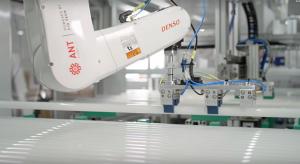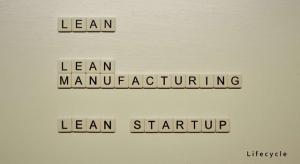All Features

Nico Thomas
Each new year brings about a period of reflection, where one can think back on the path that the previous year took us on. 2020 represents an even larger opportunity for reflection as the world enters a new decade. Reflection provides an opportunity to learn and improve, and extends beyond just an…

Gwendolyn Galsworth
Let’s talk about the 5S audit, a mechanism many companies use as their major means to stimulate employee creativity and trigger continuous improvement.
There are three fundamentals of the 5S audit.
First: It is an audit and therefore has limited capability for stimulating anything but compliance…

Jody Muelaner
The seven basic tools of quality are a standard set of graphical methods for improving quality. They can help with understanding variation and determining the root cause of errors in processes. The seven basic tools are most commonly used within lean manufacturing. All of the tools are graphical…

Donald J. Wheeler
Lean production is built on the explicit assumption that each step is operated predictably and capably. Predictable operation can only be achieved and maintained by using process behavior charts. But short production runs make it hard to see how to use process behavior charts. Parts one and two…

William A. Levinson
Almost half of Americans work in low-wage jobs despite the nation’s low unemployment rate. Aimee Picchi, writing for CBS News, cites a Brookings study that says “44 percent of U.S. workers are employed in low-wage jobs that pay median annual wages of $18,000.”1 A Bloomberg story adds, “An estimated…

Casandra Robinson
Perhaps for as many as 40,000 years, people have been protecting their feet with some type of covering, initially using animal hides and fur. Today, footwear has become high-tech, sophisticated, and in some cases smart, incorporating sensors that communicate with apps on your phone. Much of the…

Harish Jose
As readers of my columns know, I am an ardent student of the Toyota Production System (TPS). One of the core philosophies of TPS is kaizen, often translated from Japanese as “continuous improvement.” It is the idea that one should continuously find ways to eliminate nonvalue-adding activities, and…

Paavo Käkelä
After two decades of offshore productions in low-cost countries, manufacturers are now struggling with the rapidly growing salaries and countereffects of cheap production. The question that industries are asking today is: Do we continue offshoring, or should we consider reshoring?
The right answer…

Phanish Puranam
Machine learning, the latest incarnation of artificial intelligence (AI), works by detecting complex patterns in past data and using them to predict future data. Since almost all business decisions ultimately rely on predictions (about profits, employee performance, costs, regulation, etc.), it…

Jim Benson
‘It’s the shoes!” Spike Lee yelled into the camera on the Air Jordan ads.
But it was never the shoes. Michael, Magic, and LeBron would have outplayed their leagues in golf cleats.
It was never the shoes.
But it was us, the salespeople. In our case, the intelligencia that “trains” people to be…

Gwendolyn Galsworth
Two of my articles (the first regarding standards, standardization, and standard work; and the second on visual standards) drew a lot of response. Readers were kind enough to share their thoughts and definitions. Some offered new terms to include in the mix: standardized work and visual standard…

Dirk Dusharme @ Quality Digest
Government bureaucracies are inefficient. They waste taxpayer dollars, and they have no incentive to improve. We’ve all heard and probably repeated these axioms about wasteful government spending.
And it’s often true; you don’t have to look far to find examples of government overpaying for products…

Ryan E. Day
Lean: an employee-championed method of waste reduction. Six Sigma: a robust method of defect reduction. Embracing both methods provides organizations with multiple tools for continuous improvement. Developed for manufacturing, lean Six Sigma has now been recognized by government agencies as a…

Taran March @ Quality Digest
At the University of California at San Diego, lean concepts have taken hold. Along with its process improvement curriculum, the university applies what it teaches through initiatives around campus. Projects both complex and simple tackle the snags, waste, and bottlenecks of academic life. Students…

Ryan E. Day
Lean looks at ways to reduce waste and improve flow. The principles are relevant to virtually every organizational sector and vertical. It’s no surprise, then, that so many organizations tout lean and devote resources to lean initiatives. But, too often, there is a tendency for a company to promote…

Jody Muelaner
Understanding the causes of faults and defects, and then improving the system or process so it won’t happen again, is central to lean manufacturing. This article looks at some of the methods used to identify the root causes of issues so that you can prevent downtime and move toward zero-defect…

Takeshi Yoshida
‘Lean” is such a convenient term; everyone uses it based on their own definition. People frequently use “lean” in place of “efficiency,” probably because it sounds more cool. Another round of cost cutting? Sure, let’s tell everyone we’re “going lean,” again.
Lean is a proven, powerful productivity…

Harish Jose
In today’s column, I’m looking at Weber’s Law. It’s named after Ernst Heinrich Weber (born June 24, 1795, died Jan. 26, 1878), a German physician who was one of the pioneers of experimental psychology. I highly recommend the Numberphile YouTube video that explains this in detail.
A simple…

William A. Levinson
The Automotive Industry Action Group’s (AIAG’s) and German Association of the Automotive Industry’s (VDA’s) new Failure Mode and Effects Analysis Handbook (AIAG, 2019) offers significant advances over FMEA as practiced 15 or 20 years ago.1 The publication is definitely worth buying because the new…

Bruce Hamilton
This year marks the 35th anniversary of a remarkable and unfortunately also singular event in my career: In 1985, my employer, United Electric Controls (UE), elected to remove time clocks from the factory.
At the time of this unusual decision, I had already been employed at UE for 14 years in a…

Paul Foster
If you’re new to layered process audits, it’s critical to make sure everyone on your team is on the same page with basic terms. Here we provide a guide of 16 essential terms to know when launching your LPA program and getting your team up to speed. Don’t forget to directly download your own copy of…

Harry Hertz
‘I have been offered a significant increase in salary by another employer and am giving my two-week notice.”
My guess is that this is the most common reason given when employees quit their current job. But is salary the real reason most employees quit? I have always suspected and believed that,…

Miriam Boudreaux
If you are wondering whether your organization could benefit from formal root cause analysis (RCA) and corrective action training, read on to see if any of these issues are present in your day-to-day operations. RCA and corrective actions are some of the most useful tools for continual improvement…

Dirk Dusharme @ Quality Digest
What a year.
No matter your job, your industry, or your political beliefs, this year has been a heck of a ride. The (still ongoing) trade war with China, manufacturing gains (and losses), the 737 MAX, Hong Kong riots, North Korea, Brexit, impeachment. What a mixed bag of ups and downs that has…

As usual with Quality Digest’s diverse audience, this year’s top stories covered a wide range of topics applicable to quality professionals. From hardware to software, from standards to risk management, from China trade to FDA regulations. It’s always fun to see what readers gravitate to, and this…